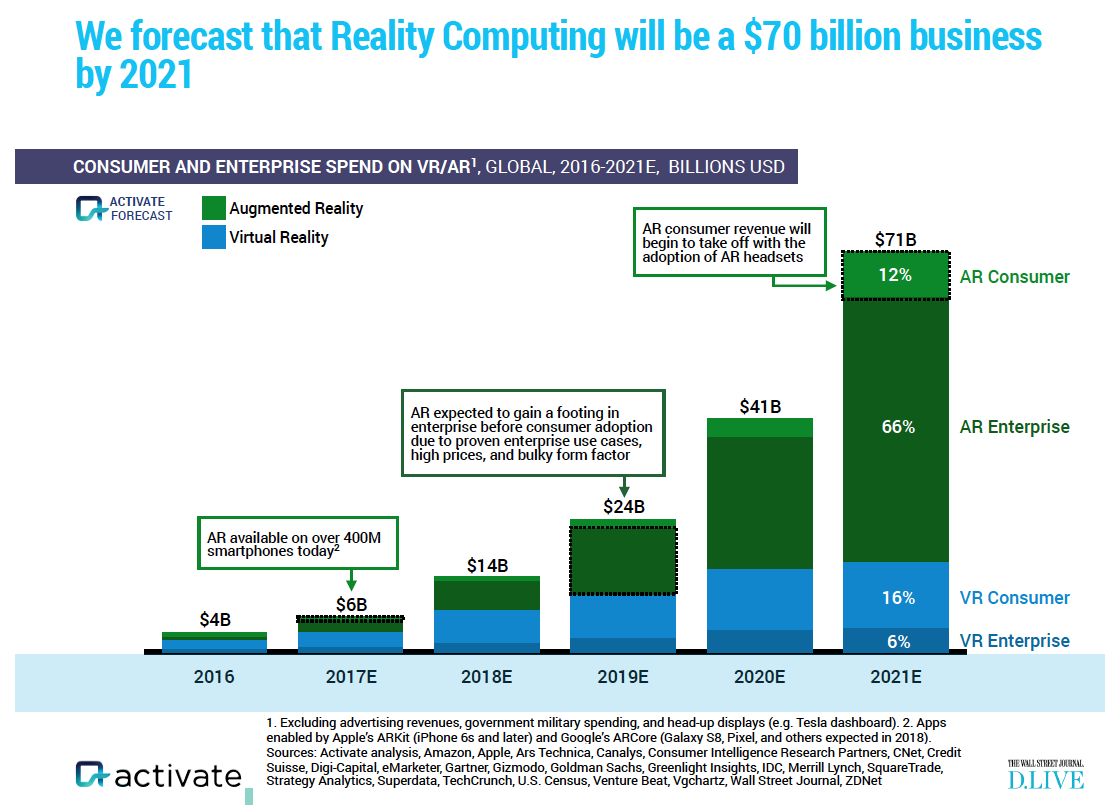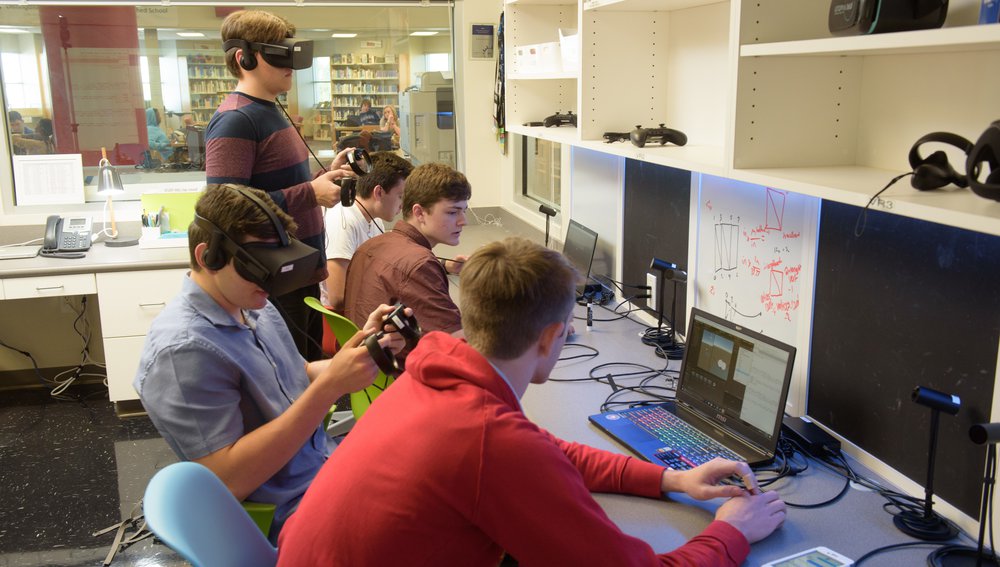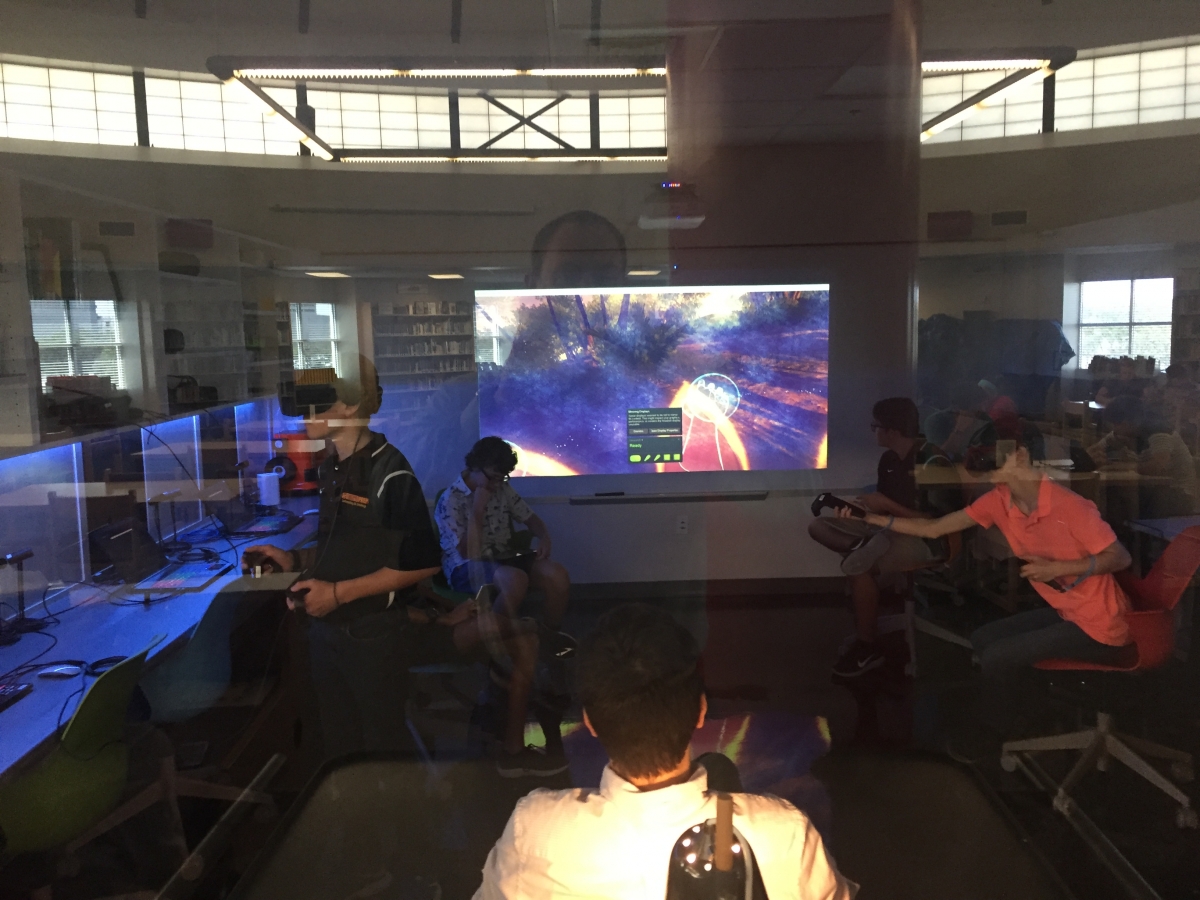Virtual reality in the classroom is a digital teaching tool where any teacher can take advantage of truly immersive technology to provide their students with a 360-degree learning environment. The computer-generated 3D device doesn’t require a lot of space and it’s cost-effective for learning. Students interact within a virtual world using electronic equipment that includes a headset with a screen inside a pair of goggles and hand sensors.
Students can travel to and explore locations all around the world, safely do experiments in a chemistry lab, experience various career opportunities, attend events that happened in the past, develop a better understanding for communities in crisis, explore ocean depths and vast space, and explore the human body without ever leaving their classroom.
The Tampa Preparatory School in Florida has a virtual reality creation lab called IDEA Lab. It stands for Innovate Design Explore and Apply and currently consists of seven stations. Three of the stations are Oculus Rift and three are HTC Vive. One HTC Vive is a mobile unit. The mobile unit goes to classrooms so students can experience VR apps created by other students. In December, the lab is getting a Lenovo mixed reality headset.
The VR program started out as a student-driven initiative with one mobile Oculus Rift VR creation station. “It has grown into an incubator of student creativity,” says Chad Lewis, Director of Technology at Tampa Preparatory School.
The students not only immersed themselves in school subjects but also build their own VR applications. “We started researching the potential impact of virtual reality on education last winter using Oculus Rifts. Initially, we were just letting kids be exposed to the power of immersion through virtual reality”
Some computer science students asked if they could build apps in virtual reality. By the time summer started they had two applications built - a chemistry application and an astronomy application. “The astronomy application not only displays the planets but also has the effect of gravitational pull,” says Lewis.
Lewis explained how the students understood the necessity of building a chemistry application because molecules can be difficult to draw and see on paper in a 2D space. “So, they wanted to build a virtual reality application where the depth would be visible in 3D. That way if you had molecules behind one another you could still see them.”
The school has 370 middle school students and 320 high school students. Twelve of their high school students are in the Virtual Reality Creation Club. They are taking the initiative and training others in building VR with Unity 3D, which involves either Java or C# programming. “It's difficult and really for computer science students,” informs Lewis.
The VR Creation Club was put to the test when three of the computer science students were invited to University South Florida College of Engineering to demonstrate their physics VR application they designed. According to Lewis, the college was absolutely blown away by their demonstration and were offering internships to the students. Their VR application demonstrated the impact of different weights and pressures on bridges.
“That is an actual physics formula they’re using.” Lewis emphasizes, “combining physics with computer programing with VR. It’s pretty amazing. I don't know of any other 6-12 institutions that are building virtual reality applications for Unity 3D. Most universities aren’t even doing that.”
of any other 6-12 institutions that are building virtual reality applications for Unity 3D. Most universities aren’t even doing that.”
The future of Virtual Reality looks strong with Reality Computing projecting a $70 billion-dollar business by 2021 along with the majority of the applications in video games, engineering, military, health care, and live entertainment according to Goldman Sachs Global Investments. Lewis agrees, considering the VR prices have dropped over the last year from $600 to $399 for an Oculus Rift.
Lewis went on to explain that the Prep School uses another VR station for virtual art. The school’s sculpturing teacher uses an application called Medium on the art department’s own Oculus Rift. The students create virtual art from physical sculptures, then they print them out on the school’s 3-D printers as sculptures. The art department is also collaborating with the engineering students on STEAM (Science Technology Engineering Art Math) projects. “It’s great to have art students being exposed to engineering and engineering students being exposed to the arts,” says Lewis.
“Many schools are starting to experiment with VR from an experiential standpoint, which is great. The power of immersion in education is meaningful. For us, however, the big differentiator is that our students aren't just experiencing other people's VR environments. They are creating their own.” concludes Lewis.











